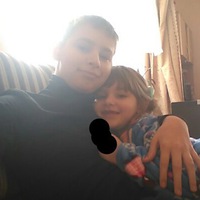
1) CH3-CH2-CH2-CH2Br----(спирт, KOH)--->X1---(HBr)-->X2---(t, Na)-->X3--(Br3, h,
свет)-->X42) CH3-CH=CH2+H2O -->3) CH2=CH-CH3+O2 --(t, Ag)-->4) CH3-CH=CH-CH3+HCl--->5) CH3-CH2-C(CH3)2-CH3--(t>140, H2SO4)-->6) CH3-CH2-CH=CH2+H2O --->7) 3-метилпентен-2 +H2O--->8) CH3-CH=CH-CH3+Cl2 --->9) C5H10+O2--->пожалуйста помогите, хотя бы что нибудь!) 0
0
 0
0
Ответы на вопрос
 Внимание! Ответы на вопросы дают живые люди. Они могут содержать ошибочную информацию, заблуждения, а также ответы могут быть сгенерированы нейросетями. Будьте внимательны. Если вы уверены, что ответ неверный, нажмите кнопку "Пожаловаться" под ответом.
Внимание! Ответы на вопросы дают живые люди. Они могут содержать ошибочную информацию, заблуждения, а также ответы могут быть сгенерированы нейросетями. Будьте внимательны. Если вы уверены, что ответ неверный, нажмите кнопку "Пожаловаться" под ответом.

1)CH3-CH2-CH2-CH2Br+KOH=CH3-CH2-CH=CH2+KBr+H2O
CH3-CH2-CH=CH2+HBr=CH3-CH2-CHBr-CH3
2CH3-CH2-CHBr-CH3+2Na=CH3-CH2-CH-CH-CH2-CH3 +2NaBr
| |
CH3 CH3
CH3-CH2-CH-CH-CH2-CH3+Br2=CH3-CH2-CBr-CH-CH2-CH3+HBr
| | |
CH3 CH3 CH3
2)CH3-CH=CH2 +HOH=CH3-CHOH-CH3
3)2CH2=CH-CH3+O2=2CH2-CH-CH3
\ /
O
4)CH3-CH=CH-CH3+HCl=CH3-CHCl-CH2-CH3
5)CH3-CH2-C(CH3)2-CH3(t)=CH2=CH-C(CH3)2-CH3
6)CH3-CH2-CH=CH2+HOH=CH3-CH2-CHOH-CH3
7)CH3-CH2-C(CH3)=CH2-CH3+HOH=CH3-CH2-C(CH3)OH-CH3
8)CH3-CH=CH-CH3+Cl2=CH3-CHCl-CHCl-CH3
9)2C5H10+15O2=10CO2+10H2O
 0
0
 0
0

1) The given reaction sequence involves several steps. Let's break it down step by step:
Step 1: CH3-CH2-CH2-CH2Br + KOH → X1 Step 2: X1 + HBr → X2 Step 3: X2 + t + Na → X3 Step 4: X3 + Br3 + h + light → X4
Unfortunately, without more information about the specific reactants and conditions, it is difficult to determine the exact products formed in each step. If you can provide more details, I can try to assist you further.
2) The reaction given is the hydration of an alkene. Let's break it down:
CH3-CH=CH2 + H2O → ?
In this reaction, the alkene (CH3-CH=CH2) reacts with water (H2O). The product formed will be an alcohol.
3) The given reaction involves the combustion of an alkene. Let's break it down:
CH2=CH-CH3 + O2 → ?
In this reaction, the alkene (CH2=CH-CH3) reacts with oxygen (O2) in the presence of heat and a catalyst (Ag). The product formed will be carbon dioxide (CO2) and water (H2O).
4) The given reaction involves the addition of HCl to an alkene. Let's break it down:
CH3-CH=CH-CH3 + HCl → ?
In this reaction, the alkene (CH3-CH=CH-CH3) reacts with hydrochloric acid (HCl). The product formed will be a chloroalkane.
5) The given reaction involves the dehydration of an alcohol. Let's break it down:
CH3-CH2-C(CH3)2-CH3 + t > 140°C + H2SO4 → ?
In this reaction, the alcohol (CH3-CH2-C(CH3)2-CH3) reacts with sulfuric acid (H2SO4) at a high temperature. The product formed will be an alkene.
6) The given reaction involves the hydration of an alkene. Let's break it down:
CH3-CH2-CH=CH2 + H2O → ?
In this reaction, the alkene (CH3-CH2-CH=CH2) reacts with water (H2O). The product formed will be an alcohol.
7) The given reaction involves the addition of water to an alkene. Let's break it down:
3-methylpentene-2 + H2O → ?
In this reaction, the alkene (3-methylpentene-2) reacts with water (H2O). The product formed will be an alcohol.
8) The given reaction involves the addition of chlorine to an alkene. Let's break it down:
CH3-CH=CH-CH3 + Cl2 → ?
In this reaction, the alkene (CH3-CH=CH-CH3) reacts with chlorine (Cl2). The product formed will be a chloroalkane.
9) The given reaction involves the combustion of a hydrocarbon. Let's break it down:
C5H10 + O2 → ?
In this reaction, the hydrocarbon (C5H10) reacts with oxygen (O2). The product formed will be carbon dioxide (CO2) and water (H2O).
Please note that the specific products formed in each reaction will depend on the reactants and conditions used. If you have more information or specific reactions you would like to discuss, feel free to provide additional details.
 0
0
 0
0
Топ вопросов за вчера в категории Химия
Последние заданные вопросы в категории Химия
-
Математика
-
Литература
-
Алгебра
-
Русский язык
-
Геометрия
-
Английский язык
-
Химия
-
Физика
-
Биология
-
Другие предметы
-
История
-
Обществознание
-
Окружающий мир
-
География
-
Українська мова
-
Информатика
-
Українська література
-
Қазақ тiлi
-
Экономика
-
Музыка
-
Право
-
Беларуская мова
-
Французский язык
-
Немецкий язык
-
МХК
-
ОБЖ
-
Психология
-
Физкультура и спорт
-
Астрономия
-
Кыргыз тили
-
Оʻzbek tili




















